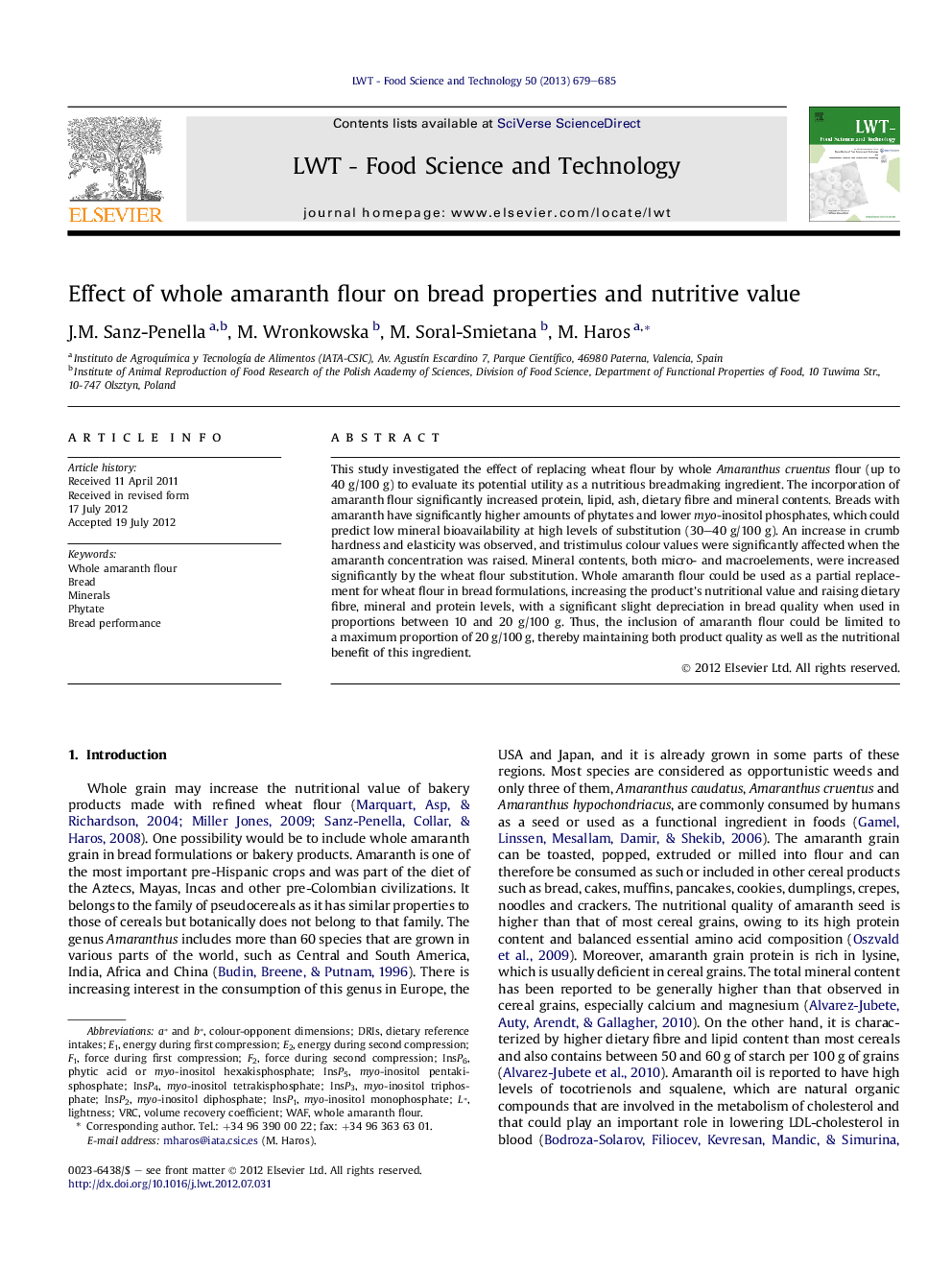| کد مقاله | کد نشریه | سال انتشار | مقاله انگلیسی | نسخه تمام متن |
|---|---|---|---|---|
| 6404928 | 1628534 | 2013 | 7 صفحه PDF | دانلود رایگان |
This study investigated the effect of replacing wheat flour by whole Amaranthus cruentus flour (up to 40Â g/100Â g) to evaluate its potential utility as a nutritious breadmaking ingredient. The incorporation of amaranth flour significantly increased protein, lipid, ash, dietary fibre and mineral contents. Breads with amaranth have significantly higher amounts of phytates and lower myo-inositol phosphates, which could predict low mineral bioavailability at high levels of substitution (30-40Â g/100Â g). An increase in crumb hardness and elasticity was observed, and tristimulus colour values were significantly affected when the amaranth concentration was raised. Mineral contents, both micro- and macroelements, were increased significantly by the wheat flour substitution. Whole amaranth flour could be used as a partial replacement for wheat flour in bread formulations, increasing the product's nutritional value and raising dietary fibre, mineral and protein levels, with a significant slight depreciation in bread quality when used in proportions between 10 and 20Â g/100Â g. Thus, the inclusion of amaranth flour could be limited to a maximum proportion of 20Â g/100Â g, thereby maintaining both product quality as well as the nutritional benefit of this ingredient.
⺠We evaluate the nutritive value and performance of bread incorporating amaranth flour. ⺠Wheat flour replacement by amaranth increases dietary fibre, minerals and proteins. ⺠The amaranth inclusion produce slight depreciation in bread quality. ⺠The estimations of intakes of micro- and macroelement are compared with the DRIs. ⺠Bread with amaranth has high amount of phytate predicting low mineral bioavailability.
Journal: LWT - Food Science and Technology - Volume 50, Issue 2, March 2013, Pages 679-685
